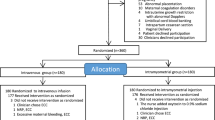Abstract
Objectives
To design an objective and accurate method to assess the peri-partum blood loss and to document the benefits of using this method on estimation of blood loss by healthcare professionals.
Materials and Methods
This prospective study was conducted over 6 months at Cama Albless Hospital, Mumbai. To quantify the loss of liquid blood and clots, we made use of plastic drapes, measuring jars, gravimetric method and a training module along with novel clot conversion factor which was designed to validate the visual assessment of blood loss by healthcare professionals.
Results and Conclusion
The visual assessment of blood loss is unreliable. Training module should be on display in labor room and periodic training sessions on visual assessment by and for healthcare professionals are recommended, as we documented that training has definitely a beneficial impact on visual assessment. Clot conversion factor calculated in this study can prove to be a useful tool for objective assessment. Routine use of quantitative measurement rather than visual assessment of blood loss will go a long way to prevent hemorrhage-related maternal deaths.









Similar content being viewed by others
References
Khan KS, Wojdyla D, Say L, et al. WHO analysis of causes of maternal death: a systematic review. Lancet. 2006;367(9516):1066–74.
Glover P. Blood loss at delivery: how accurate is your estimation? Aust J Midwifery. 2003;16(2):21–4.
Toteja GS, Singh P, Dhillon BS, et al. Prevalence of anemia among pregnant women and adolescent girls in 16 districts of India. Food Nutr Bull. 2006;27(4):311–5.
Schorn MN. Measurement of blood loss: review of the literature. J Midwifery Womens Health. 2010;55(1):20–7.
Bose P, Regan F, Paterson-Brown S, et al. Improving the accuracy of estimated blood loss at obstetric haemorrhage using clinical reconstructions. BJOG. 2006;113(8):919–24.
Yoong W, Karavolos S, Damodaram M, et al. Observer accuracy and reproducibility of visual estimation of blood loss in obstetrics: how accurate and consistent are health-care professionals? Arch Gynecol Obstet. 2010;281(2):207–13.
Al-Kadri HM, Dahlawi H, Al Airan M, et al. Effect of education and clinical assessment on the accuracy of postpartum blood loss estimation. BMC Pregnancy Childbirth. 2014;14:110.
Toledo P, McCarthy RJ, Hewlett BJ, et al. The accuracy of blood loss estimation after simulated vaginal delivery. Anesth Analg. 2007;105(6):1736–40.
Patel A, Goudar SS, Geller SE, et al. Drape estimation vs. visual assessment for estimating postpartum hemorrhage. Int J Gynaecol Obstet. 2006;93(3):220–4.
Zuckerwise LC, Pettker CM, Illuzzi J, et al. Use of a novel visual aid to improve estimation of obstetric blood loss. Obstet Gynecol. 2014;123(5):982–6.
Cheerranichanunth P, Poolnoi P. Using blood loss pictogram for visual blood loss estimation in cesarean section. J Med Assoc Thail. 2012;95(4):550–6.
Sukprasert M, Choktanasiri W, Ayudhya NI, et al. Increase accuracy of visual estimation of blood loss from education programme. J Med Assoc Thai. 2006;89(Suppl. 4):S54–9.
Author information
Authors and Affiliations
Corresponding author
Ethics declarations
Conflict of interest
All the authors declared that they have no conflict of interest.
Human and Animal Rights
This article does not contain any studies with human or animal subjects.
Informed Consent
Informed consent was taken from the personnel participating in the training and visual estimation of discarded blood volumes.
Additional information
Dr. Suvarna Khadilkar is Consultant Gyne-Endocrinologist Bombay Hospital Institute of Medical Sciences and Medical Research Center, Mumbai and Ex-Associate Professor and Unit Chief, Cama and Albless Hospital, Mumbai. Akanksha Sood is Senior Clinical Fellow at Saint Mary’s Hospital, Central Manchester University Hospitals NHS Foundation Trust, Manchester, UK and Ex- Assistant Professor at Cama and Albless Hospital, Mumbai. Dr. Prajakta Ahire is Managing Director, Gavali Hospital and Parag Polyclinic, Rabale and Ex-Assistant Professor at Cama and Albless Hospital, Mumbai.
Rights and permissions
About this article
Cite this article
Khadilkar, S.S., Sood, A. & Ahire, P. Quantification of Peri-partum Blood Loss: Training Module and Clot Conversion Factor. J Obstet Gynecol India 66 (Suppl 1), 307–314 (2016). https://doi.org/10.1007/s13224-016-0888-9
Received:
Accepted:
Published:
Issue Date:
DOI: https://doi.org/10.1007/s13224-016-0888-9




